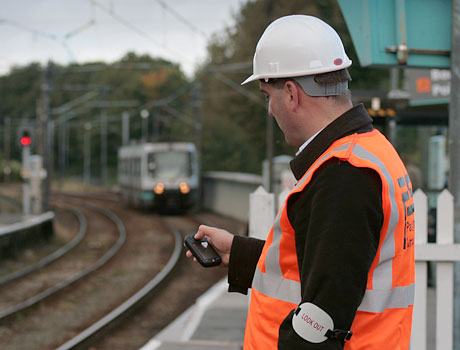|
If the track safety proclamations of the past decade had all come to fruition, our hardhatted comrades would be labouring in a sunny Shangri-La where every cess is manicured and TCODs grow on trees. Leading safety gastronomes habitually over-egg the pudding until it becomes an omelette, raising implausible expectations which simply can’t be met.
Never was the hype so extravagant than with Automatic Track Warning Systems. A Railtrack video once implied that lookouts were living on borrowed time thanks to the wealth of advantages offered by electronics. Having penned the script, I can do no more than hang my head in shame and bare my backside for a damn good kicking. Apologies if you’ve just eaten.

The ATWS bandwagon ground to a halt in the land of track renewals and the wheels then fell off. For many reasons - cost, practicality and politics being three of them - they never revolutionised maintenance. A lookout devotee once described these blaring machines as “a fabulous solution to a non-existent problem”. Somewhat over-simplistic but you get the point.
His argument stumbles in darkness. Lookouts are largely prohibited from peering through gloom so the chocolate teapot of safe systems - the separated green zone - now rules the roost of nocturnal railwaymen. Those of us prejudiced against such ‘protection’ will tell you that Mark Falivena, killed at Desborough in August 2001, would still be alive today were it not for its deficiencies. Trouble is, for tasks only lasting minutes, there’s no sensible warning mechanism for use after nightfall.
Enter the Train Alert Handswitch - a flickering flame of hope lit by some bright sparks on a TSSG subgroup. Their initial concept has been brought to life at Park Signalling whose techno-wizards have harnessed a pair of PDAs (handheld computers linked wirelessly to a data network) to create radio Pee Wee and a lightweight LOWS (Lookout Operated Warning System) for patrolling. If the prototype is anything to go by, it ticks all the right boxes.
Logistics: carry it to site in your pocket. Set up time: one minute. Training: “Here’s the on/off switch - follow the on-screen instructions.” Security: safe tone, vigilance system and self-testing. Requirements of the distant lookout: push the button when a train appears. For the site lookout: blow your whistle when the alarm goes off. Range: almost infinite. And price: a week’s rental could be half the cost of a single agency lookout shift.
At the risk of whipping up a soufflé, it has no obvious failing apart from not being Swiss. If developed to its full potential, the handswitch could be a cheap, practical plug in a life-threatening procedural hole, one which has been persistently disregarded.
|
| ...the handswitch could be a cheap, simple and practical plug in a life-threatening procedural hole... |
|
Refreshingly, the visionaries at Manchester Metrolink don’t own any blinkers and have already enjoyed a demonstration to prove the technology. On-track trials could start within weeks. The big boys’ railway will only feel the handswitch if a sponsor recognises its potential and helps to navigate the perilous approval quagmire. You can almost hear the laggards erecting barricades.
As a crusty old cynic, I have now learnt to manage down my expectations. Real-world innovations generally fall victim to ignorance, paralysis or apathy - there are no obvious grounds to predict a brighter future for digital chequered flags. However, when the next unprotected trackworker shakes hands with oblivion, I hope our leaders take a long, hard look at themselves. With their engagement, this risk could be beaten.
Time to break some eggs, methinks.
Story added 1st November 2006
|